Armar un briefcase es importante para los estudiantes que solicitan ciertos programas de grado o se preparan para embarcarse en sus carreras. Muchos empleadores o clientes (o universidades, si es para un programa escolar) solicitan muestras de trabajo como parte del proceso de contratación (o aceptación), debido a que es una forma de que vean lo que eres capaz de hacer y el tipo de trabajo que haces. he hecho antes. Un portafolio es la mejor manera de presentar estas muestras y tenerlas listas para lucirse.
En este artículo nos centraremos en los beneficios de tener un portafolio y usar WordPress para crear portafolios que harán que su búsqueda de trabajo be un éxito. ¡Entonces empecemos!
Why have an online portfolio?
Con los avances en la tecnología y casi todos los usuarios de Internet, cada vez más estudiantes mantienen copias electrónicas de sus portafolios en línea e incluso crean sitios Web para albergarlos. El uso de una cartera en línea puede facilitarle las cosas a medida que comienza su carrera:
- Las carteras en línea se convierten en parte de su presencia en línea general, especialmente si incluye el link en sus perfiles de redes sociales para que los empleadores, clientes o clientes potenciales puedan encontrar fácilmente su trabajo cuando lo busquen.
- It's easy to provide a link to your site and you don't have to worry about file sizes for email attachments or sending a large fax.
- You can include the link on your resume, so hiring managers know exactly where they can find your job.
Tener un portafolio en línea al mismo tiempo muestra a los empleadores potenciales que puede usar al menos un sistema de administración de contents y que está familiarizado con el funcionamiento de los sitios web. En un momento en que persons de todas las edades y conjuntos de habilidades buscan trabajo, esto puede brindarle una ventaja sobre otros solicitantes.
Getting started with WordPress
Using WordPress to create your online portfolio is pretty straightforward. If you already have an account with WordPress.com, consider switching (or at least adding a new site) to self-hosted WordPress.org; it is much more versatile in terms of customization and you will have much greater control over how your site looks and works.
Incluso si es totalmente nuevo en WordPress, le recomendamos que comience con el autohospedaje. Hay una pequeña tarifa de alojamiento mensual y una tarifa de registro de domain anual, pero el costo y la responsabilidad adicionales merecen tener un control total sobre el sitio de su cartera. Al mismo tiempo hay un aspecto adicional: registrar su nombre de dominio significa que no tendrá el subdomain .wordpress.com, por lo que su dirección web se verá más profesional.
Cost can be a very important factor for students, so while researching accommodation companies, check if they have special prices for students. Bluehost and SiteGround are two that offer plans for students.
When choosing your domain name (the name of your site), it is best to use your own name; it will be more likely to appear in searches. You may want to consider using a tagline at the same time, to make it very clear what your site is about.
Select a portfolio WordPress theme
A continuación, elija un tema para su sitio. Un tema de Blog básico probablemente satisfará tus necesidades, pero si buscas que tu portafolio se destaque, debes tener un tema que esté diseñado para mostrar el contenido del portafolio. Tenemos una lista de algunos de nuestros temas de portafolio favoritos, temas de portafolio de WordPress.
Free themes are a great way to start, but generally they don't have the extra features or customization options you'll find in a premium theme. If you are looking to create a professional portfolio online, you should consider upgrading to the pro version of your theme (if applicable) or purchasing a premium theme, which can range in price from $ 2 to $ 199. Themes can be purchased from various markets. online, such as ThemeForest, Creative Market, StudioPress, Themed Beans, Elegant Themes and many others.
These are just a few of our favorites:
Total It is our best option due to its ease of use, powerful options and flexibility. Although this theme is a multi-purpose drag-and-drop theme, the built-in portfolio makes it ideal for creating an online collection of your work. And there are many demos to choose from that you can use to get started.
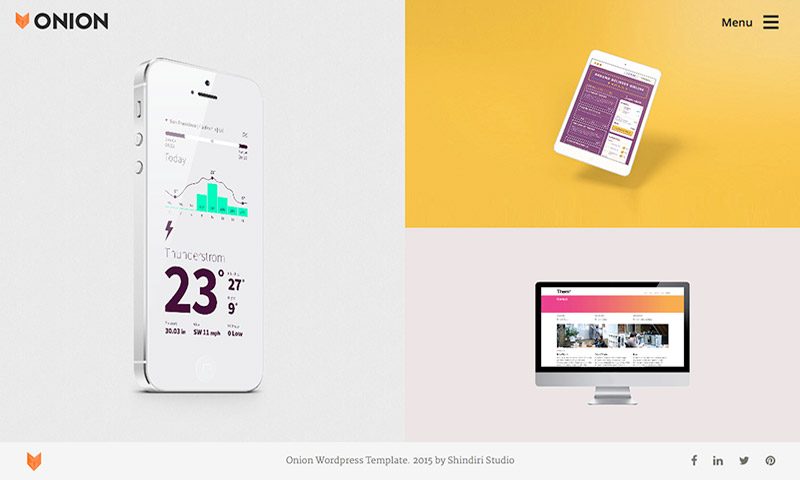
Onion by Shindiri Studio is an amazing portfolio theme with multiple layouts. Choose a grid, masonry grid, sticky binder, or agency style to display your projects.
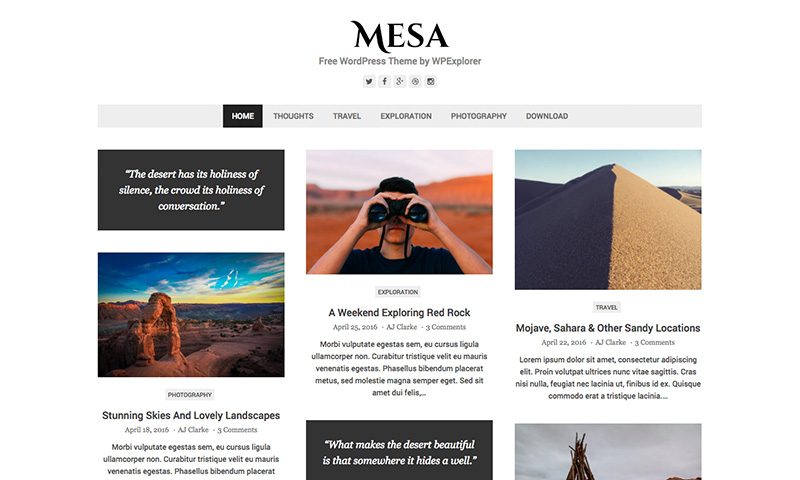
Low hill is a free masonry design blog theme that could easily be used for an online portfolio. With support for images, galleries, audio, video, and quotes, this theme is a great free way to showcase your media online.

North Array Themes is an awesome option for creating an online portfolio. This theme has everything you need, including a useful blog, an impressive portfolio, and easy pages (files, contacts, and full width) to present your work.
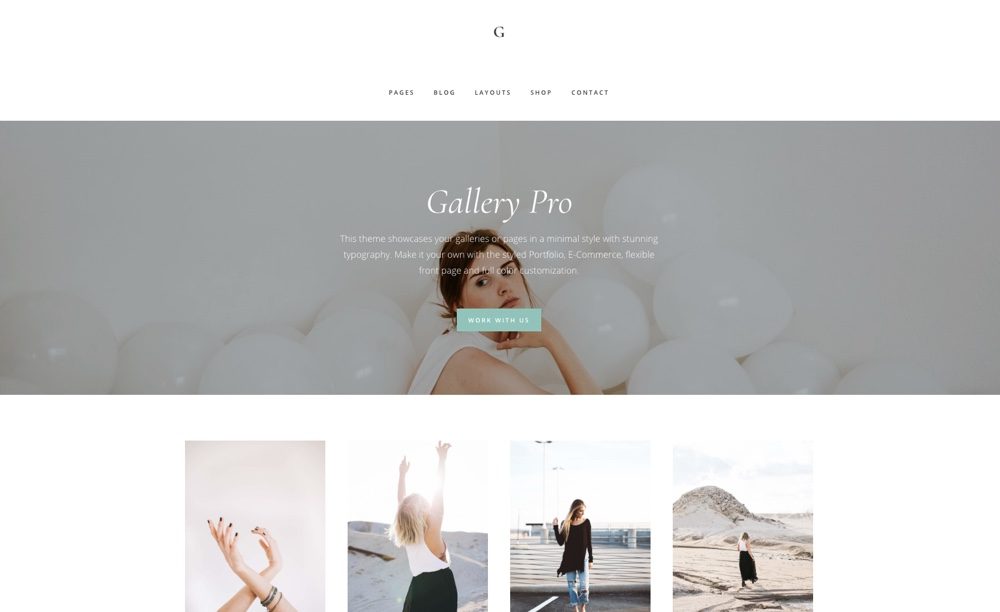
Gallery Pro StudioPress is a great option if you love using the Genesis framework. This clean, minimal, and decidedly modern theme is an easy way to add your bio and portfolio to your WordPress site.

Pineapple is a simple free blogging theme with a clean single column layout. The minimalist design of this theme is perfect for displaying your latest work as you produce it, and since the theme supports multiple media formats (image, audio, video, quotes) and includes basic layout options, you can let your work go shine.
Use a portfolio plugin
Another option, if you don't like any of the portfolio themes, is to add a portfolio plugin. There are a ton of free portfolio plugins in the WordPress repository that you can use to add a portfolio to almost any theme. To add a plugin, go to Accessories in the admin menu and click Add new to browse your free options.
At the same time there are so many great premium portfolio plugins, which have more features and functionality than their free counterparts. We've already covered portfolio WordPress plugins, but in case you missed it, here are some of our favorite plugins:

Essential grid by themepunch is one of the best-selling wallet plugins, and for good reason. With this plugin, you can create any portfolio grid style you want using the included layouts, row and column options, content fonts, animations, preloaders, skins, custom colors, and much more.
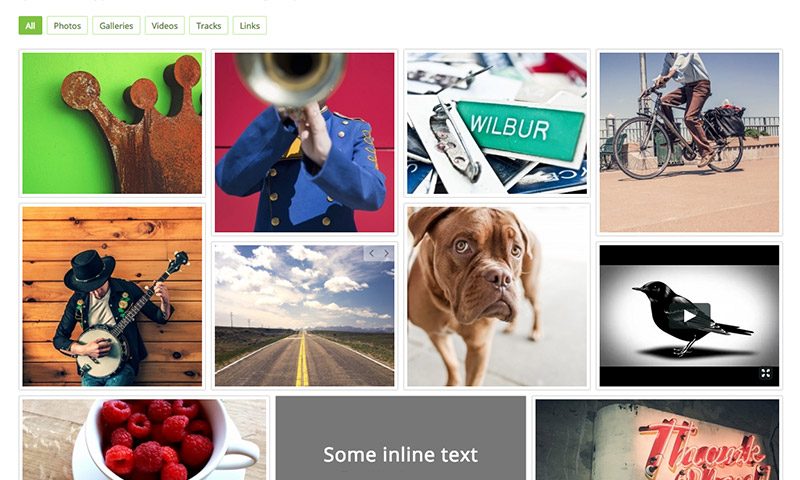
Media grid LC Web is a great option that offers you unlimited layouts. Use the visual grid generator to organize your photos, videos, links, and audio files into fully responsive grids.

Diario de Instagram by C Rivers is a unique portfolio plugin that pulls your portfolio images from something most of us already use: Instagram. Take ongoing photos of your current projects and add them to your website portfolio with this plugin!
Choose your content
Before you start adding content to your portfolio, make sure you know what you want to include. Since you may not have done much professional work in your field yet, it's okay to use academic papers, class projects or presentations, and any community service projects you have done. If you have a resume or CV, you may want to create a page for that at the same time.
Try to include samples that are relevant to the field you are entering. If you are a writer, use writing projects and publications. If you are an artist or an engineer, or if you dedicate yourself to a trade like carpentry, upload images of things that you have designed, created, built or arranged. Scientists could provide lab reports. Accountants can include financial reports and analysis. You get the idea.
When adding your work samples, write a short description of each one to provide context. You may want to explain what the project was about and how it provided (or would provide) a benefit to someone or would otherwise contribute to the field. Here is a simple example along with a link to the uploaded document:

Don't go crazy with the number of samples you load. Your portfolio will grow as you do so, so don't feel like you need tons of filler. Pick your best projects, 10-15 is enough, and organize them into categories according to the type of project. This will make it easier for employers to find relevant samples.
Loading samples
It's not difficult to upload your work samples to WordPress, but the amount of time and effort involved can vary depending on the format of your samples. If you have electronic copies or images, then you are good to go. If you don't, you should get some.
Hard copies of printed documents, reports and photos can be scanned as PDF files. Take digital photos of physical objects like paintings or sculptures. Music and videos can be recorded or edited in digital formats. Regardless of what you choose to upload, make sure your files are saved to a location dedicated to working samples, so you know exactly where to find them.
Once you have your digital copies ready, it's time to load them up! Login to your WordPress account and go to your admin page. Navigate to your media library and select Add new:

On the Upload New Media screen, you can simply drag and drop files into the box, or you can click the Select files to browse files to upload.
Add samples to your portfolio
Now that you have your theme or plugin installed and your samples (and any other files) uploaded, you can add your work to your portfolio. In Admin, go to the Portfolio page and click Add new. This will open the text editor.
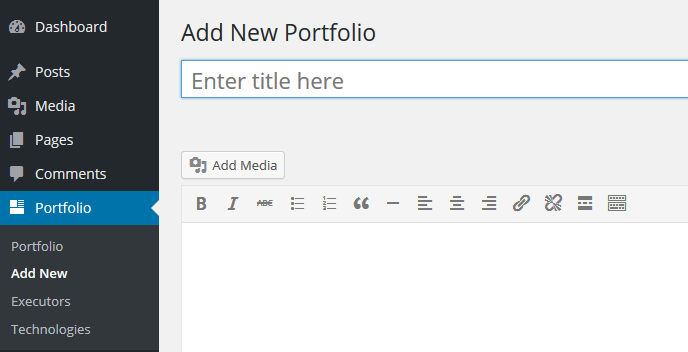
For most themes and plugins, adding a new portfolio post is as easy as adding a blog post. For most portfolios, you will add a post title, description, and featured image as usual. But you may have additional fields available to access additional information about your sample for location, date, context, etc. Something with wallets, like TotalYou can even include gallery metaboxes where you can upload all your gallery or slider images for posting.

Once you have completed all the information you need, click Publish. Ta-da! You have now successfully added a working sample to your WordPress portfolio. Repeat these steps for each sample that you want to add.
Presenting your best work in a portfolio is important to making a good impression when applying for academic jobs or programs. Using an online portfolio will help you further differentiate yourself and reach a wider audience, and WordPress is one of the best tools for doing this. There are many resources for putting together an amazing portfolio, so have fun!
Have you created an online portfolio before? Thinking of creating one? Share your tips or ask any questions in the comments below.







